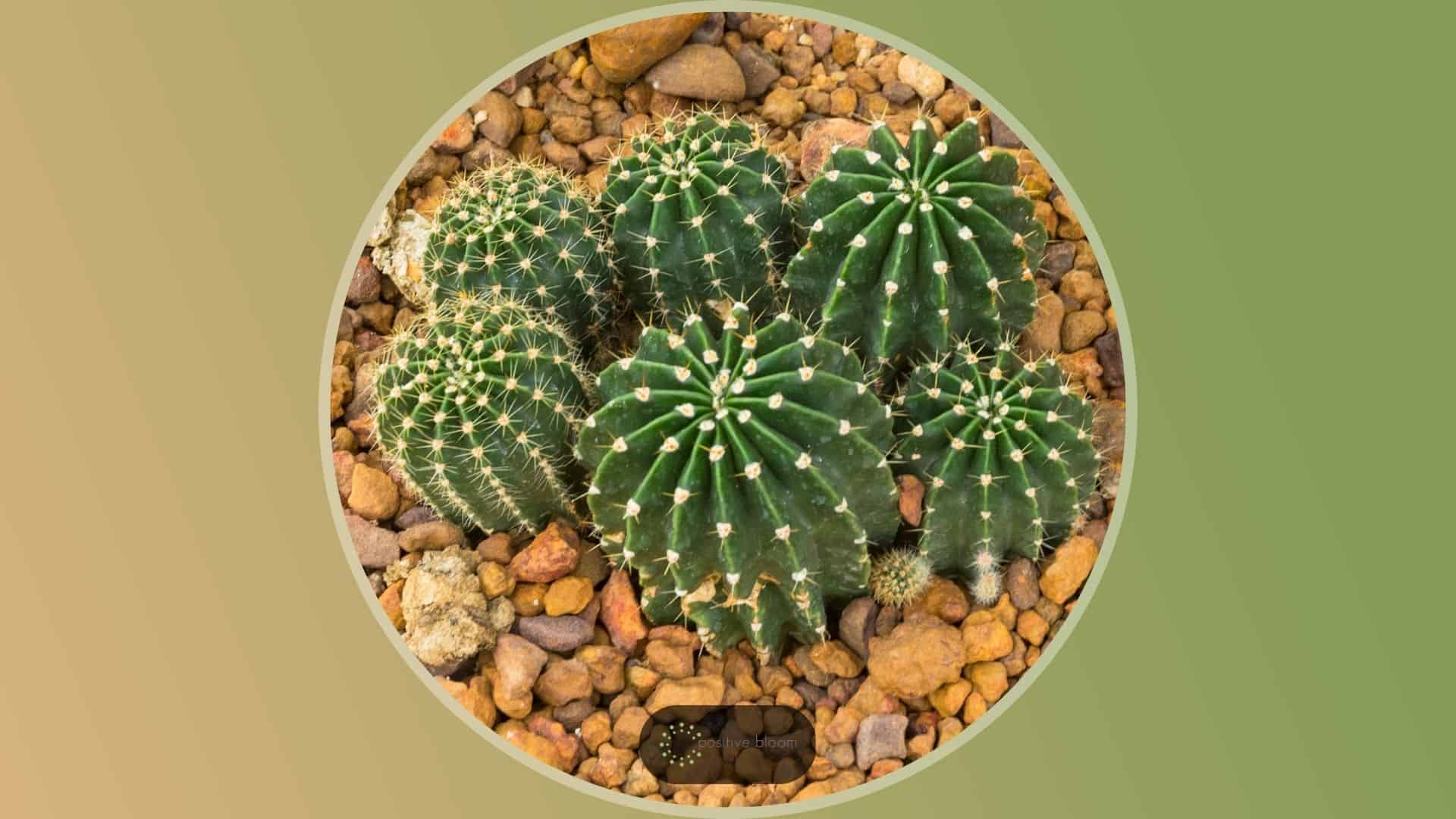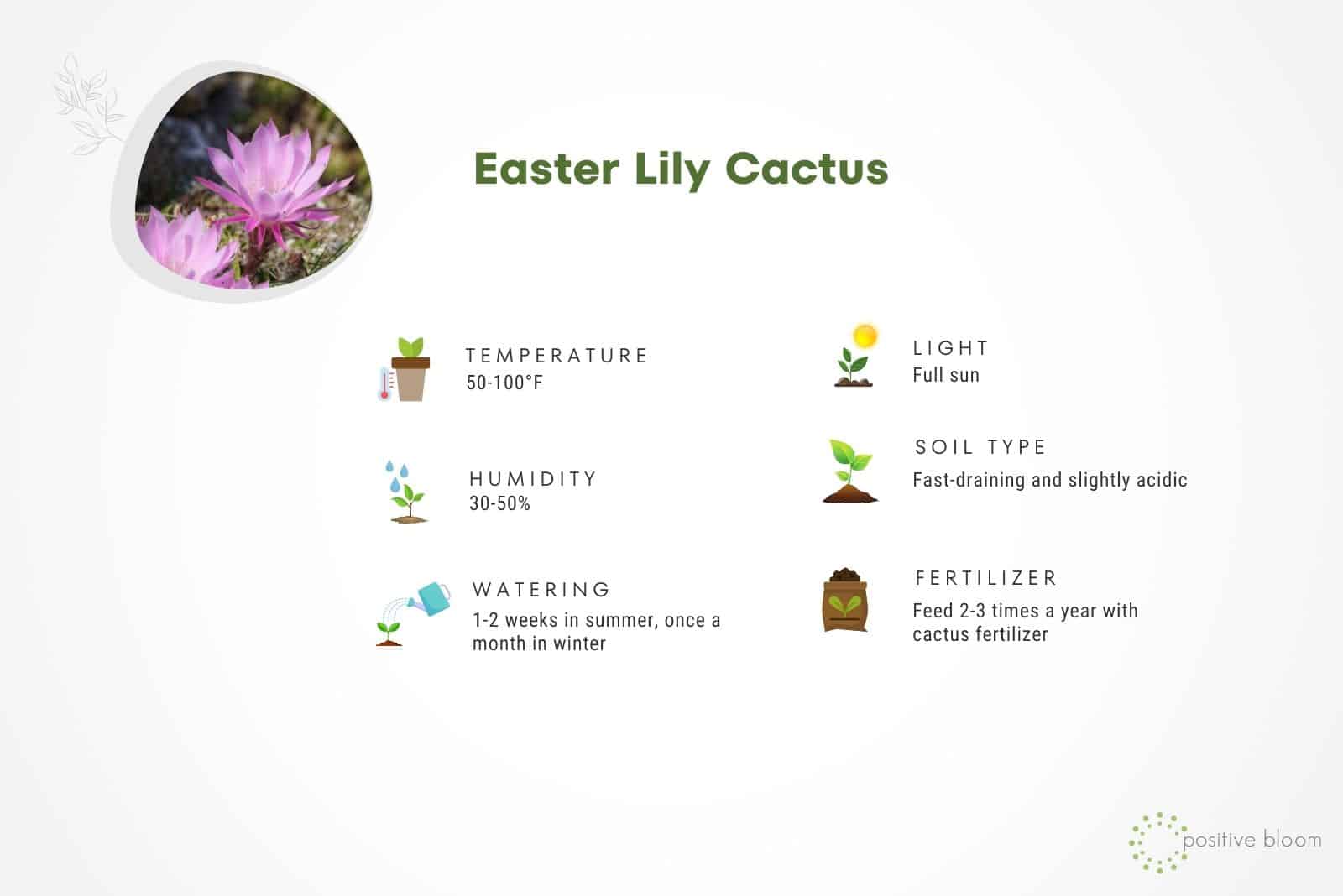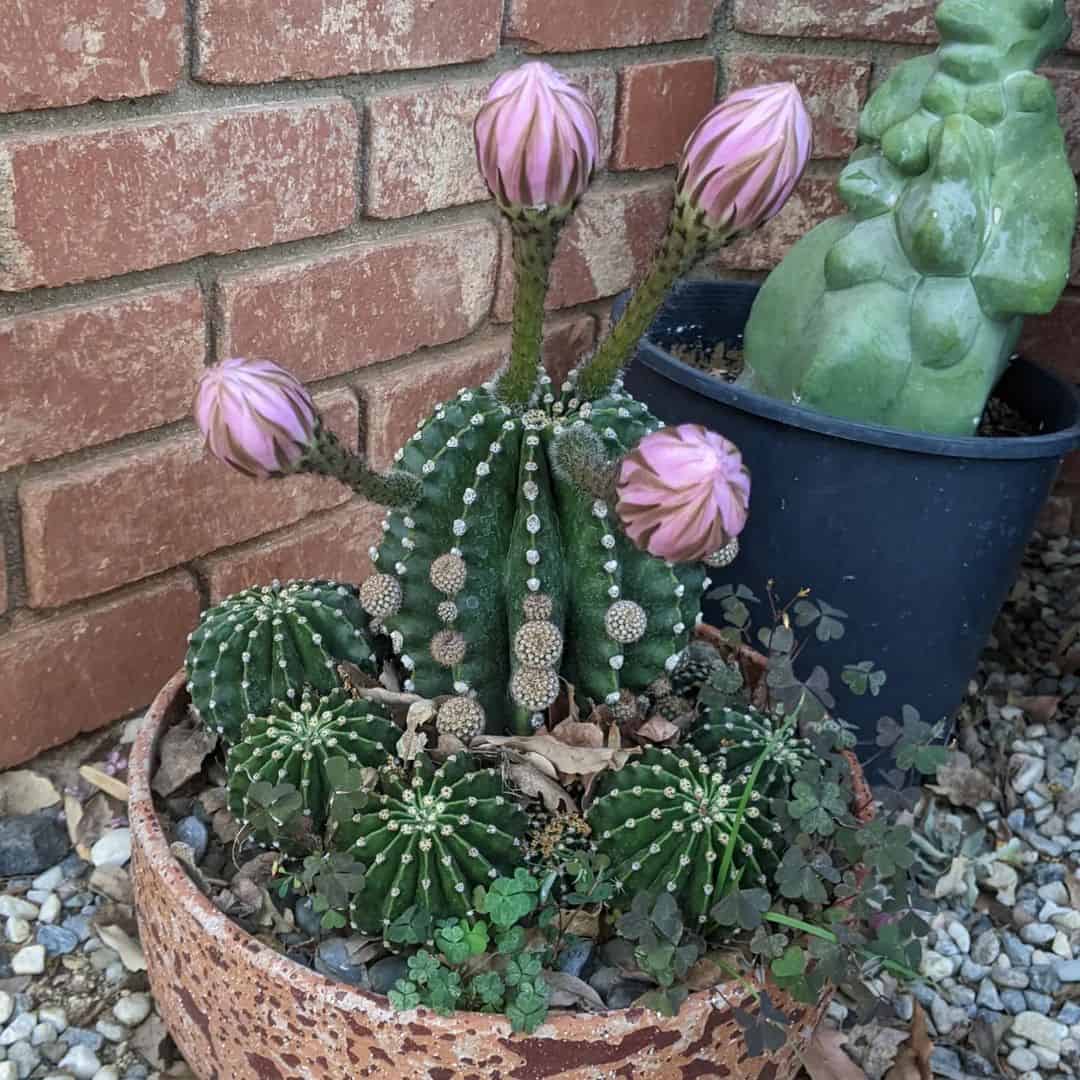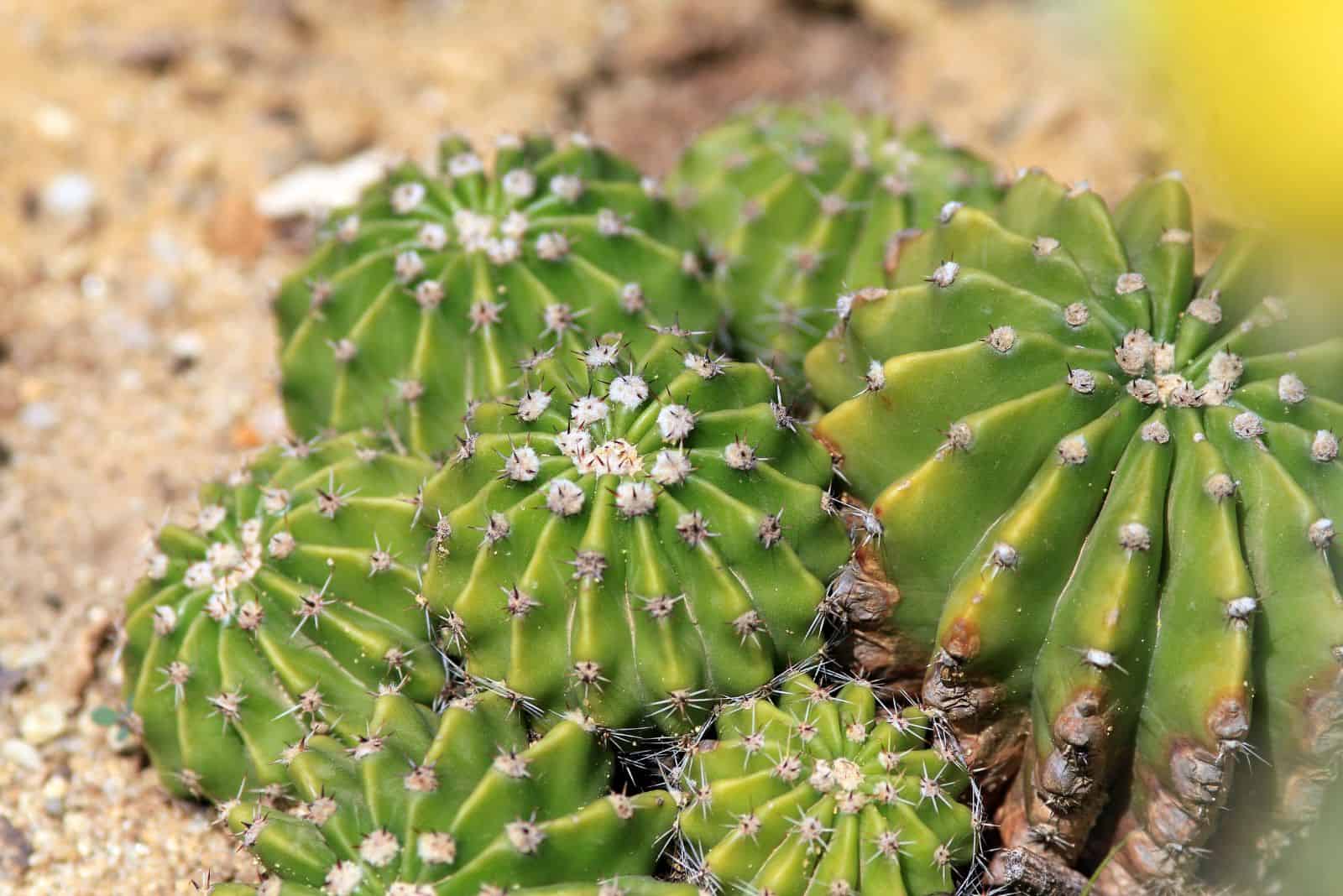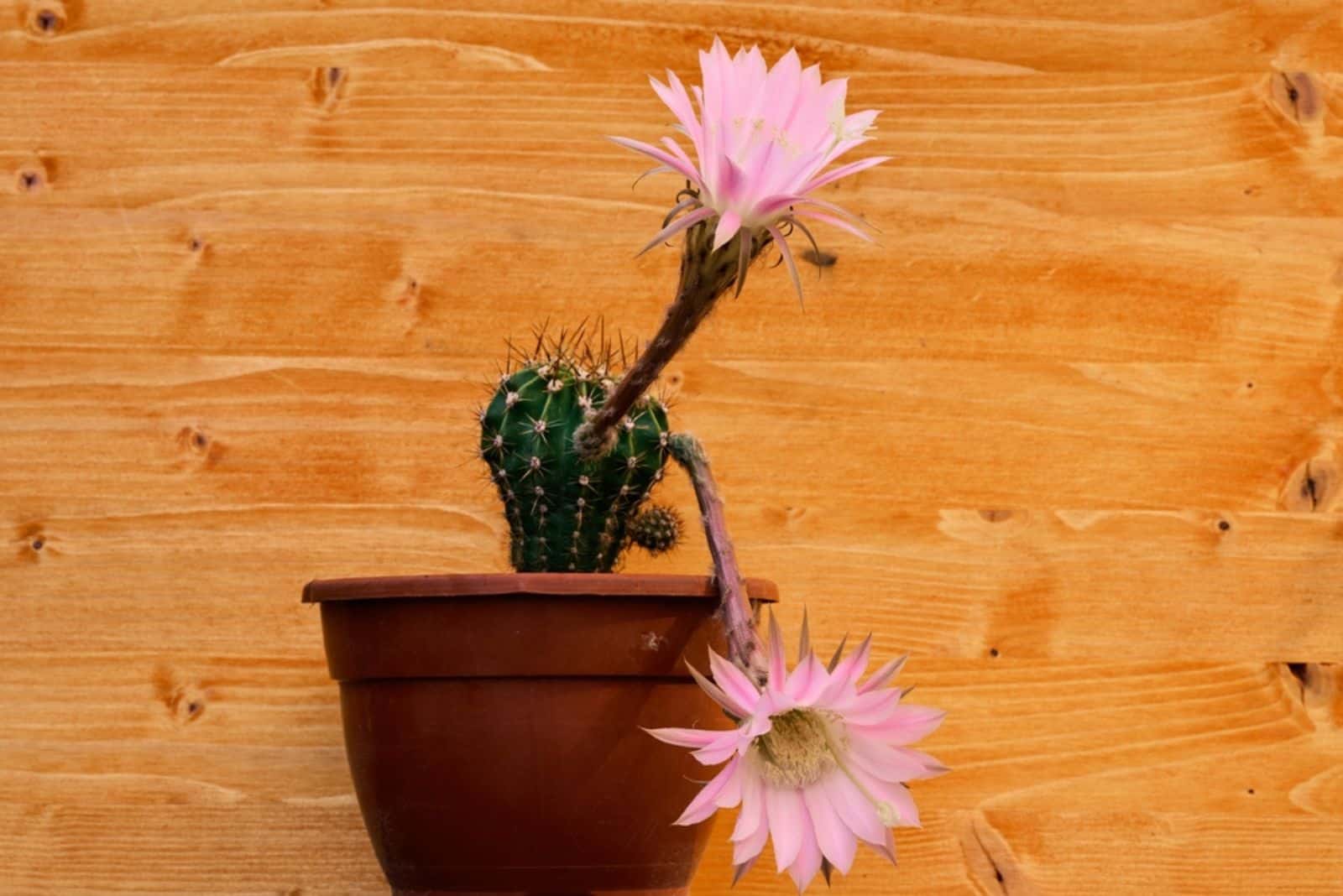We all love cactus and succulent houseplants because they don’t require too much maintenance and add greenery and vibrant colors to any decor.
The Easter lily cactus is virtually the same in this sense! You just need to meet its requirements and it will surprise you with vivid natural colors and beautiful flowers.
But how do we care for it? Well, we’ll answer that question in the article below, and also discuss the most common pests and diseases you may encounter while caring for this night-blooming hedgehog.
Before we get there, let’s look into its general information:
[table id=634 /]
Echinopsis Oxygona Easter Lily Cactus Care Guide
The Easter lily cactus is a low-maintenance plant that requires minimal watering, a quick-draining potting medium, and full sun to thrive.
Of course, if you want it to produce the prettiest blossoms, you can fertilize it, repot it every so often, and ensure it is in lower humidity levels.
But regardless of what you do with it, don’t forget to wear gloves for handling cactuses since its spikes can bite back!
Light Requirements
This member of the Cactaceae family thrives in full sun conditions, so place it in the sunniest spot you can find.
If possible, move it outside during warm and dry seasons to absorb as much as it can.
And if you decide to grow it as an indoor plant all year long, you can place it on an east or south-facing windowsill to soak up direct sunlight.
Water And Humidity
How often to water a cactus mainly depends on its species, pot, size, etc. When it comes to the Easter lily cactus, you should know that it prefers more moisture than some other varieties.
For instance, you might need to water it once a week or every other week in summer, depending on the surrounding temperature and the amount of light you expose it to.
Generally speaking, you should irrigate it as soon as its potting soil dries out. This plant doesn’t like to spend long periods without water, so bear that in mind.
On the other hand, you should always (and I mean always) wait until the growing medium dries out, because overwatering it before that could cause various issues (one of them being the dreaded root rot).
Finally, once this plant enters dormancy and you place it in a slightly cooler area, you should reduce watering to about once a month or as long as it takes for the soil to dry out.
Humidity
This cactus can tolerate low and moderate humidity levels, so the good news is that you don’t have to use a humidifier or a mister to keep it healthy.
Average household humidity is between 30-40%, which is ideal, although this plant can tolerate relative air moisture levels of about 50%.
Temperature
This cactus can tolerate temperatures down to 50°F or lower, but only for short periods; long exposure to cold could stress it out too much.
On the other hand, it can grow just fine in conditions up to 100°F, but you will have to water it more frequently.
Once it enters dormancy, you should move it to a slightly colder area to prevent it from becoming leggy.
Finally, avoid keeping it in drafty locations near AC vents, heaters, old windows, etc., since constant and sudden temperature changes can stress it out and prevent flowering, proper growth, etc.
Soil And Fertilizer
The best potting soil for cactuses is fast-draining and aerated with a lot of coarse material. You can get it in the garden center to avoid creating a mess, or you can mix one yourself by mixing equal parts loam compost or potting soil, horticultural grit, and sand.
You should also ensure that the pH is neutral or slightly acidic (between 6.0-7.0) to ensure the best absorption of moisture and nutrients.
Fertilizer
This cactus has a faster growth rate than some other species, so you should fertilize it a couple of times during its growing season to support this growth.
Use plant food specially blended for cactuses and succulents 2-3 times per year (or more if otherwise indicated on the package).
If you want more blossoms, you should find a fertilizer with slightly higher potassium levels since it triggers flowering.
Propagation
One of the best things about the Easter lily cactus is that it sends out offsets, and you can easily propagate them from the mother plant.
Step 1. Cut the pup as close to the base as possible or use a pair of tweezers and twist it around until it falls off.
Step 2. Put them away and wait several days until a callus forms over the wound.
Step 3. Fill a new pot with a quick-draining medium, and place the baby plant in it.
Step 4. Since the offsets don’t have any roots, you don’t have to water them at first because the moisture from the growing substrate is enough. (Start irrigating them once you notice they have become greener and have put on new growth).
Step 5. Place them in bright indirect light and wait for your new plants to root!
If you need more information about de-pupping and propagating, check out the video below:
Repotting
These cactuses grow relatively fast, and if you aren’t lucky enough to live in a warm climate and have an outdoor rock garden, you will have to repot it.
The best time for transplanting this cactus is in spring so that it can have enough time to recover from the transplant shock before dormancy.
You should also choose the best container for cactuses. Terracotta pots with drainage holes would be ideal because they don’t retain too much moisture.
Then, place some growing medium at the bottom of the planter, place your showy cactus in it, and cover its roots with more substrate.
Water it and place it in its usual position.
Common Issues With The Easter Lily Cactus
Even though cactuses are low-maintenance plants, they can still suffer from certain issues, such as infections and infestations.
Luckily, you can avoid these problems by taking good care of your plant.
But if it does come to these things, you’ll be glad to hear that you can deal with them quickly and effectively.
Pests
The most common houseplant pests that attack this cactus are spider mites and mealybugs. They usually infest weak plants, so make sure to give your spikey buddy everything it needs.
However, if you do notice these bugs sneaking around, you can easily remove them with a neem oil spray or an insecticidal soap without harming your plant.
Diseases
This plant doesn’t succumb to diseases easily, but if you keep overwatering it, you can accidentally give it root rot.
Some of the common signs of this disease include stunted growth, wilting, an unpleasant smell coming from the pot, and discoloration.
Therefore, if you notice that your cactus is turning black, it could be a sign of inadequate watering and fungal diseases.
If you suspect root rot, you should take your green buddy out of its pot, expose the roots, and remove soggy and dark ones because they cannot function properly anymore.
Spray the rest of them with some fungicide to prevent the return of the fungi, and repot it in a new potting medium.
Features Of The Easter Lily Cactus
Before we finish off, let’s take a moment to admire the amazing features of this globose cactus.
We frequently confuse it with the Echinopsis multiplex, but they are not the same plant. This one has a clumping habit, hairy areoles, and showy blossoms that are sometimes larger than the whole plant.
White or pink flowers open in late afternoons or at night, but they soon wilt (sometimes even the next day if it’s particularly hot).
The Domino cactus variety also comes under the name Easter Lily, but it’s a completely different plant.
FAQ
How often does the Easter lily cactus bloom?
The Echinopsis oxygona flowers in late spring, but it can rebloom in summer 2-4 more times. The flowers last no more than 24 hours, but we find consolation in the fact that it blooms often.
One more thing; this plant has to be at least three years old before it can blossom, so be patient.
What does the Easter lily cactus smell like?
The flowers of this night-blooming cactus are quite fragrant, and many describe their scent as sweet.
Final Thoughts
The Easter lily cactus is a low-maintenance plant that requires direct sunlight, fast-draining soil, and occasional watering for optimal growth.
You should also fertilize it 2-3 times throughout its growing season and repot it if it becomes too large for its pot.
Even though it isn’t susceptible to pest infestations and fungal infections, these issues can still occur, especially if the plant is weak.
Therefore, you should meet all its requirements, monitor it frequently for any sign of harmful insects or diseases, and deal with those problems as soon as you encounter them.
Until next time!

